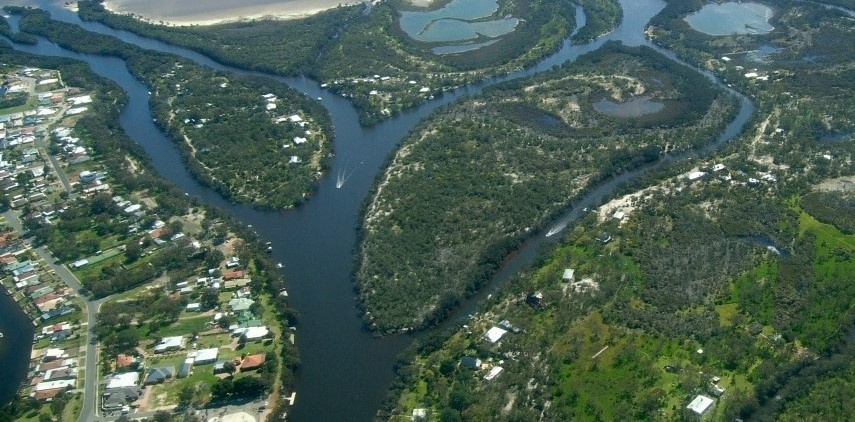Drainage is the natural or artificial removal of excess surface and sub-surface water from a catchment. In the urban context, drainage is the way stormwater and groundwater interact with the built form and natural water features.
As our cities and towns grow, the landscape changes as natural and rural areas become urban spaces and the natural flow of water through the landscape changes. Understanding the way stormwater and groundwater move through a catchment is a key step in managing the impacts of land use change on our water resources.
Drainage should be considered early in the land planning process so that good water management and catchment planning practices can be incorporated into urban development in a way that benefits the community, the economy and the environment.
We work collaboratively with local and other state government agencies, service providers and community and natural resources management agencies for better water and environmental outcomes.
Catchment drainage planning
Show moreWe undertake targeted catchment drainage planning for high priority, future development areas to gain a detailed understanding of the movement of stormwater and groundwater in the landscape.
This includes the potential for and extent of stormwater and groundwater interactions with other features such as wetlands, rivers and existing drains.
We do this to help state and local government, infrastructure owners, landowners, developers and the community to understand the risks to infrastructure and public safety from stormwater (flooding) and groundwater (inundation) to provide criteria for the management of stormwater and groundwater.
Drainage and water management plans (DWMP) provide the approaches to manage stormwater and groundwater while developing the land and also protecting infrastructure and people from the risks of flooding. Read more on our drainage for land use planning page.
Some high priority developments are in areas that are constrained by multiple and interacting factors such as major rural drains, flood storage capacity, seasonal inundation from high groundwater levels, and the potential for flooding from nearby wetlands and rivers.
This means that catchment drainage planning is done at the regional scale to capture the full range of relevant water interactions. This also supports and informs planning decisions associated with the State Government’s strategic land planning processes.
Drainage and water management plans may also be supported by technical studies which focus on aspects such as how the surface water and high groundwater levels behave in the area, or the risk of flooding, using modelling and drainage studies.
Stormwater
Show moreStormwater is the direct result of rainfall over a catchment. It consists of runoff from rainfall events (including flood events), and any pollutants or materials, soluble or insoluble, that are mobilised in its path of flow.
Rainfall events are classified as small, minor, and major.
Small rainfall events range from very frequent to frequent up to 1 exceedance per year. The stormwater generated needs to be managed primarily for ecological protection to maintain stormwater quality and the form and hydrology of the receiving environments.
Minor rainfall events range from frequent to rare, greater than 1 exceedance per year to 10% annual exceedance probability. Managing stormwater from these events is to provide serviceability amenity and road safety.
Major rainfall events range from rare to very rare, greater than 10% annual exceedance probability up to 1% annual exceedance probability, and can cause catchment scale flooding that can lead to loss of life as well as damage to buildings and critical infrastructure. Flood protection is the main outcome to seek when managing runoff from ‘major rainfall events’.
Well planned and designed stormwater management systems can:
- protect public health and safety
- protect public and private infrastructure and buildings from damage
- protect and enhance sensitive receiving environments
- enable economically sustainable construction
- reduce maintenance and renewal/replacement costs
- achieve good urban amenity.
Where the groundwater table is high and groundwater is required to be intercepted and mobilised as part of urban development, the drainage management systems will need to manage both stormwater runoff and groundwater simultaneously.
Working with local government and industry we are responsible for providing Western Australian stormwater management principles, policies, guidelines and criteria. We assess proposed stormwater management approaches and provide technical advice as part of the land use planning process and the State Government’s strategic projects.
Read more on our drainage for land use planning page.
Groundwater
Show moreGroundwater is the water that occupies the pores and crevices of rock or soil beneath the land surface.
In the urban development context, it relates to unconfined shallow groundwater that may be encountered during, or adversely affected by urban development.
Groundwater that is close to the natural ground surface is often expressed through rivers, creeks, and wetlands and in some areas, it sits on the surface for extended periods.
The design of urban form should ensure that groundwater near or at the surface is managed to balance the needs of groundwater-dependent ecosystems and groundwater users, and minimise adverse impacts on groundwater and receiving environments from urban development. The design also needs to ensure that houses, roads, and infrastructure are not adversely impacted by extended periods of inundation and open spaces are useable.
Where high groundwater is required to be managed as part of urban development, the drainage management systems will need to manage both stormwater runoff and groundwater simultaneously through the separate drainage systems.
In the context of land planning, through the referral process, we review proposed groundwater management approaches and can provide technical guidance as part of the land use planning process and the state government’s strategic projects.
We are responsible for superficial groundwater management principles, policies, guidelines and criteria associated with urban development.
Read more on our drainage for land use planning page.



